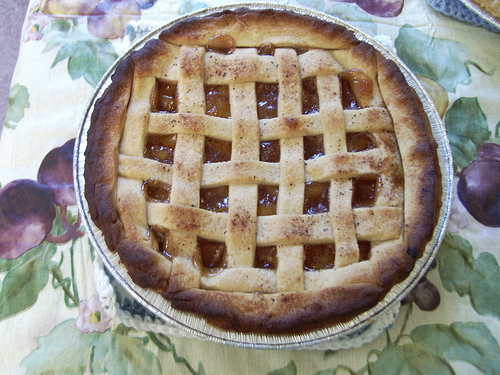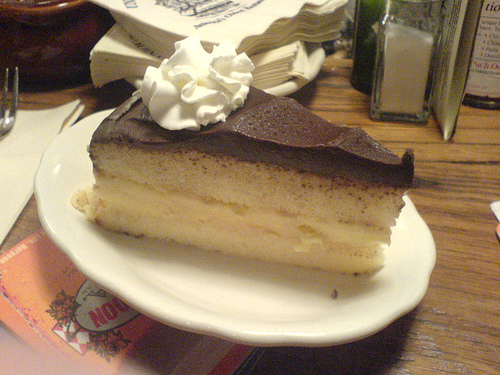
Source: woodhead-drive-4, nickfyson, Flickr
Why do we want to spend all this time labeling sentences? It’s because once you know what you are dealing with, you will be able to revise your writing for sentence variety.
Note that the revision being recommended in this lesson is revising each simple sentence to something else. You don’t necessarily need to change complex sentences to compound sentences or compound sentences to sentences that are compound-complex. Avoiding long stretches of simple sentences with no variation is most important.
Simple to Compound
Revising a simple sentence into a compound sentence requires a comma and a coordinating conjunction (i.e., for, and, nor, but, or, yet, so). Sometimes more than one conjunction will work, but most of the time, a specific conjunction will work best. Read the simple-sentence pairs below, and then choose the conjunction from the drop-down menu that best combines the sentences.

Note: There is another way to join two simple sentences together. You can use a semicolon, but beware; semicolons are not Super Commas. Don’t use a semicolon unless there is a complete sentence on either side. Also, you should use a semicolon only when the two sentences are closely related and balanced in importance.
Simple to Complex

Source: Management of Complexity, Michael Heiss, Flickr
The same system we used above will work for revising two or more simple sentences into a single complex sentence. The problem is that there are many more subordinating conjunctions than there are coordinating conjunctions.
The following is a list of subordinating conjunctions: after, although, as, as if, because, before, even if, even though, if, if only, rather than, since, that, though, unless, until, when, where, whereas, wherever, whether, which, and while.
Revising simple sentences into complex sentences requires subordinating conjunctions. Remember that subordinate clauses, which contain subordinating conjunctions, can be placed at the beginning, in the middle, or at the end of a sentence.
You may find that more than one conjunction will work, but most of the time, a specific conjunction will work best. Read the simple-sentence pairs below, and then choose the subordinating conjunction from the drop-down menu that best combines the sentences into one complex sentence.

Note: One type of complex sentence does not use a subordinating conjunction but instead uses a relative pronoun to join a descriptive clause to a main clause. Relative pronouns include who, whom, which, and that.
Refer to the resource Restrictive/Nonrestrictive Clauses and Punctuation of Contrasting Expressions for a refresher course on the use of relative pronouns to combine sentences. You may also want to review Strengthen Sentence Variety/Sentence Combining in the Related Resources for a general introduction to the concepts involved in combing sentences.
Getting Fancy: Simple to Compound-complex

Source: fancy window thattaway, Ari Moore, Flickr
Now you’re going to take on the big guys. You will change four (!) simple sentences into one compound-complex sentence. You might be saying to yourself, “Why four? Couldn’t we make a compound-complex sentence with just three simple sentences?” The answer is “Yes.” We could also make a compound-complex sentence with five simple sentences, but for now, you will try to do a four-to-one revision.
 For the next two sets of sentences below, the goal is to create a compound-complex sentence that contains two independent clauses and two dependent clauses. (1) Read the sentences and combine two into a compound sentence. (2) With the remaining two sentences, create two dependent clauses using the conjunctions when, and, and if. (3) Add one dependent clause to each independent clause of the compound sentence. In your notes, write your responses, including your compound-complex sentence. When you’re finished, check your understanding to see a possible response. (Note: This is like a puzzle. Try working this sentence out in several ways until you arrive at the best solution.)
For the next two sets of sentences below, the goal is to create a compound-complex sentence that contains two independent clauses and two dependent clauses. (1) Read the sentences and combine two into a compound sentence. (2) With the remaining two sentences, create two dependent clauses using the conjunctions when, and, and if. (3) Add one dependent clause to each independent clause of the compound sentence. In your notes, write your responses, including your compound-complex sentence. When you’re finished, check your understanding to see a possible response. (Note: This is like a puzzle. Try working this sentence out in several ways until you arrive at the best solution.) 
Source: Peach Pie, librarykitty, Flickr
Pie is not hard to make.
You know what you are doing.
Pie is very good to eat.
It is properly prepared.
Sample Responses:
Revised sentence: When you know what you are doing, pie is not hard to make, and if it is properly prepared, it is very good to eat.
Also correct: Pie is not hard to make when you know what you are doing, and it is very good to eat if it is properly prepared.
Explanation: Of course, the dependent clauses could be placed at the end, or one could be placed at the end and one at the beginning of each independent clause. You can please yourself in the placement of the dependent clauses.

Source: Boston cream pie @ union oyster house, Jed
Schmidt, Flickr
Boston cream pie is actually a cake.
You are eating a cookie.
You eat a Moon Pie.
It is called a pie.
Sample Responses:
Revised sentence: Although it is called a pie, a Boston cream pie is actually a cake, and when you eat a Moon Pie, you are eating a cookie.
Also correct: A Boston cream pie is actually a cake although it is called a pie, and you are eating a cookie when you eat a Moon Pie.
Explanation: Of course, the dependent clauses could be placed at the end, or one at the end and one at the beginning of each independent clause. You can please yourself in the placement of the dependent clauses.